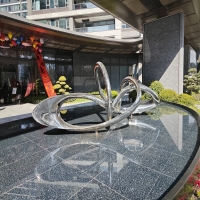Welcome to the website for landscape facilities products and knowledge.
How do manufacturers test the resistance of landscape chairs to prolonged exposure to industrial pollutants?
Manufacturers rigorously test the resistance of landscape chairs to prolonged exposure to industrial pollutants to ensure their durability in harsh environments. These tests simulate real-world conditions, including exposure to chemicals, UV radiation, and extreme weather.
One common method involves accelerated weathering tests, where chairs are placed in chambers that replicate years of exposure to pollutants and sunlight in a condensed timeframe. Manufacturers also conduct chemical resistance tests by applying industrial pollutants like acids, alkalis, and solvents to the chair surfaces, monitoring for discoloration, weakening, or corrosion.
Material-specific evaluations are critical. For metal chairs, salt spray tests assess corrosion resistance, while plastic chairs undergo UV stability tests to prevent brittleness. Fabric components are tested for fading and degradation when exposed to airborne pollutants.
Additionally, real-world field testing in industrial zones provides long-term data on performance. Manufacturers analyze these results to improve materials and coatings, ensuring landscape chairs withstand prolonged exposure to industrial pollutants while maintaining functionality and aesthetics.
By combining lab simulations and field studies, manufacturers guarantee that landscape chairs meet high standards for durability and safety, even in heavily polluted areas.
Related search:

Recommendation
Abstract art sculpture, stainless steel metal sculpture, large-scale water feature sculpture